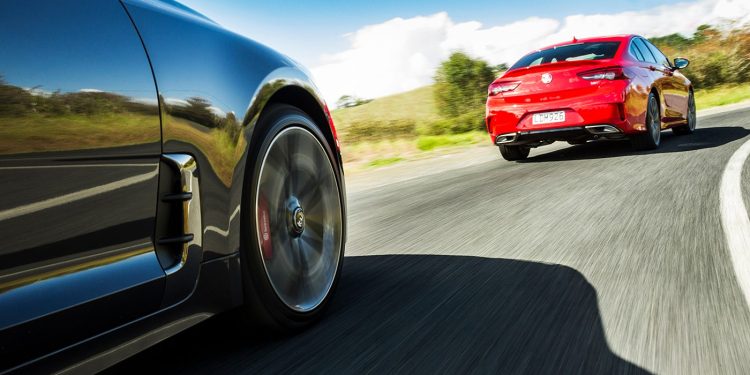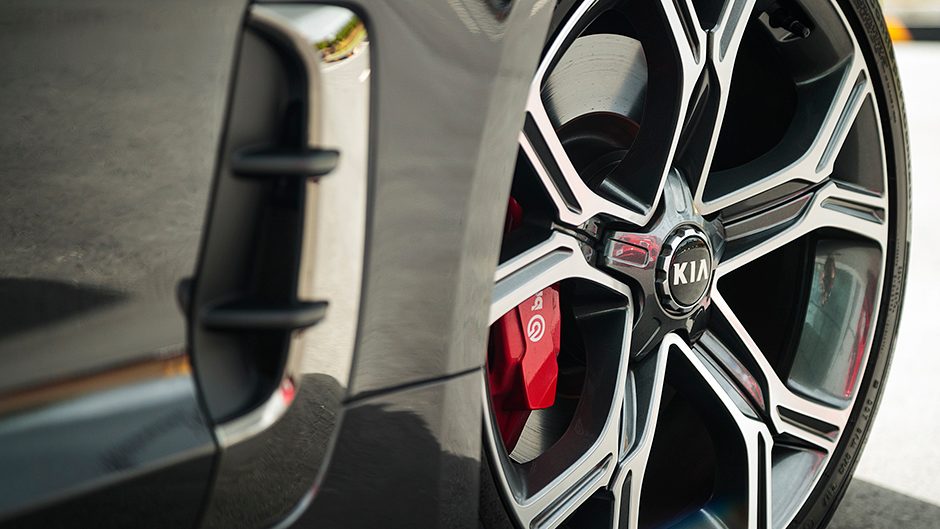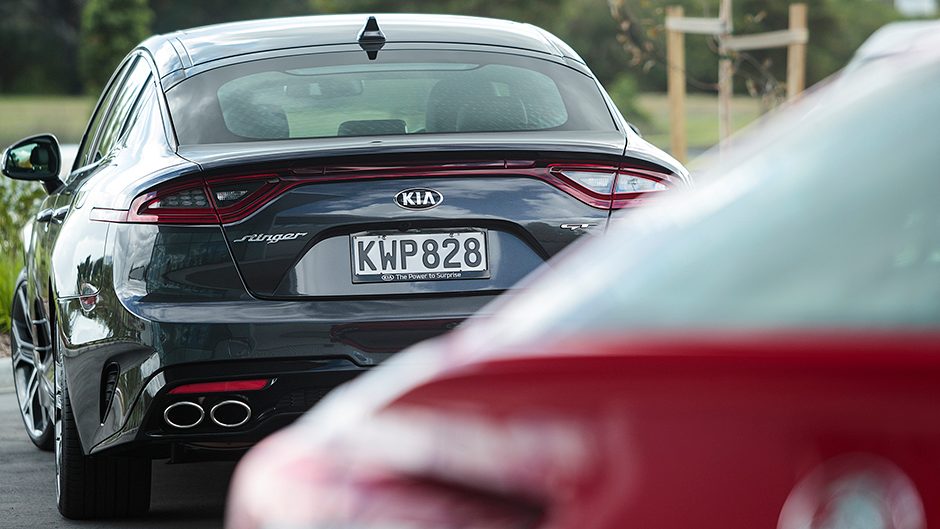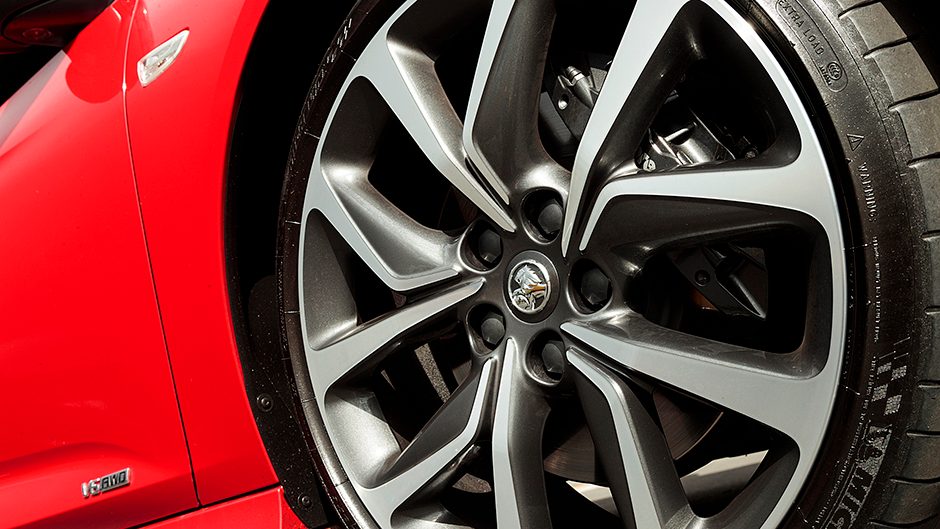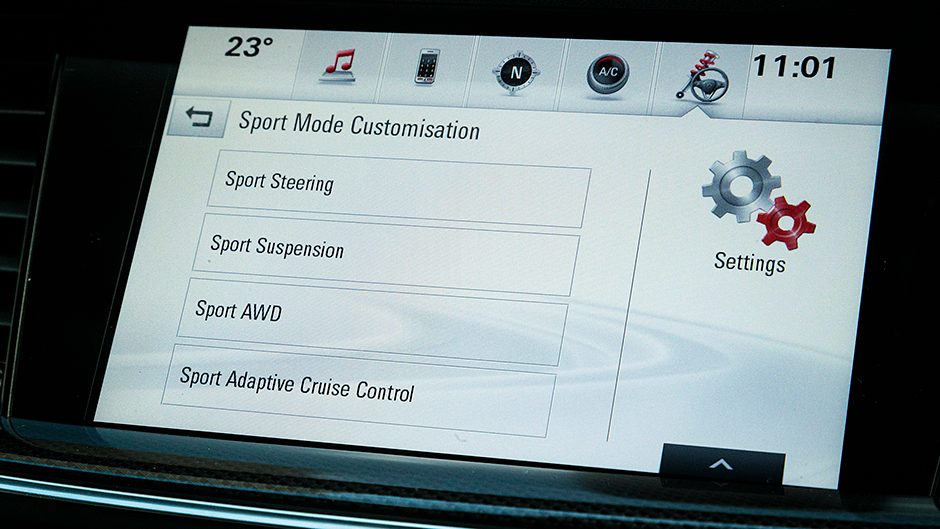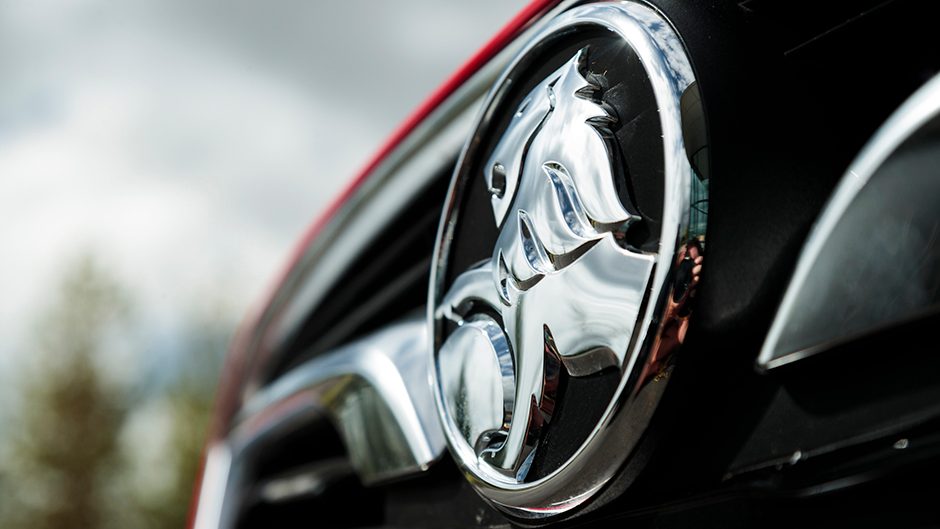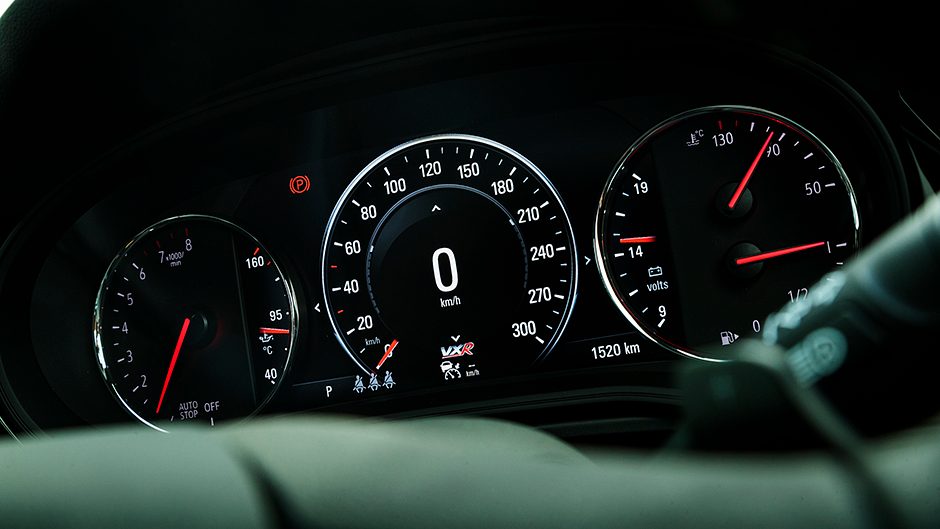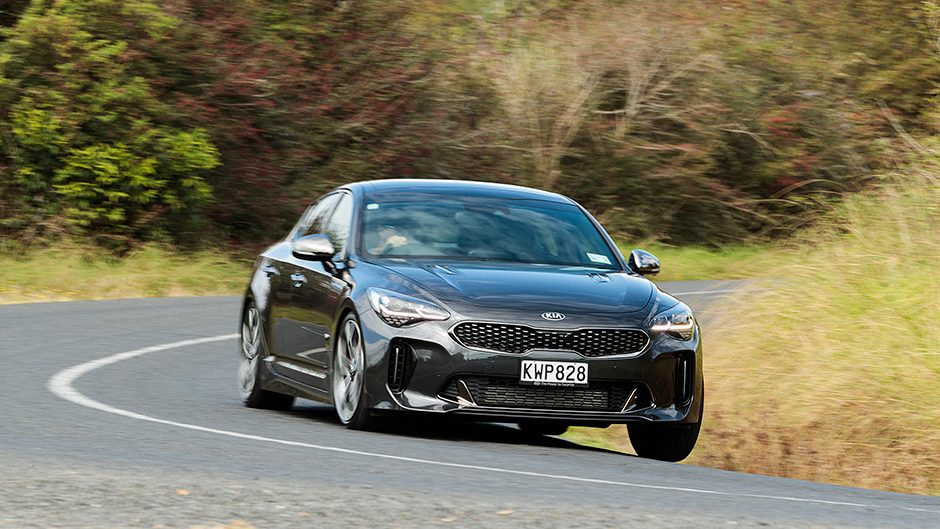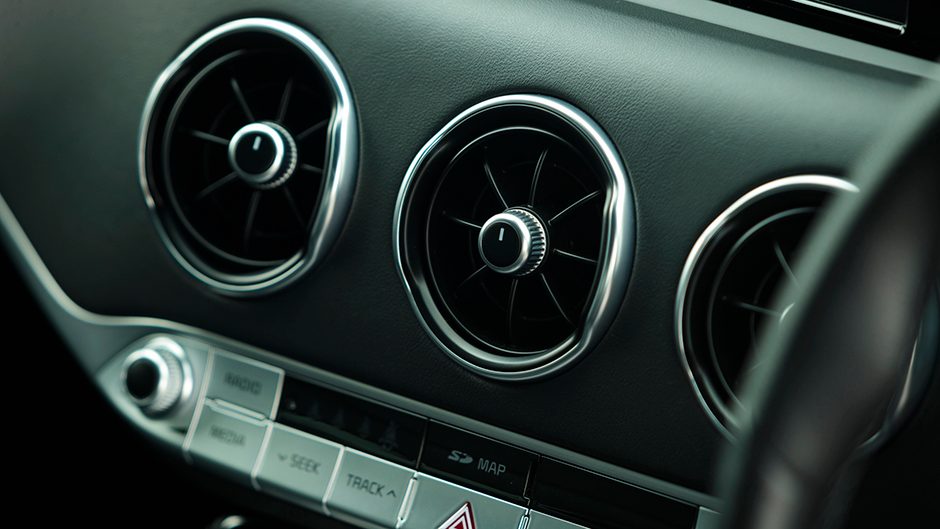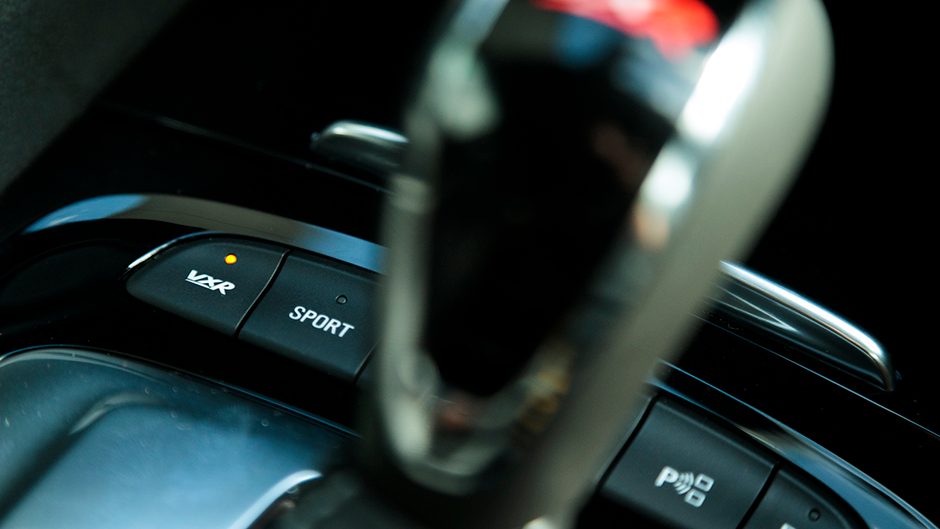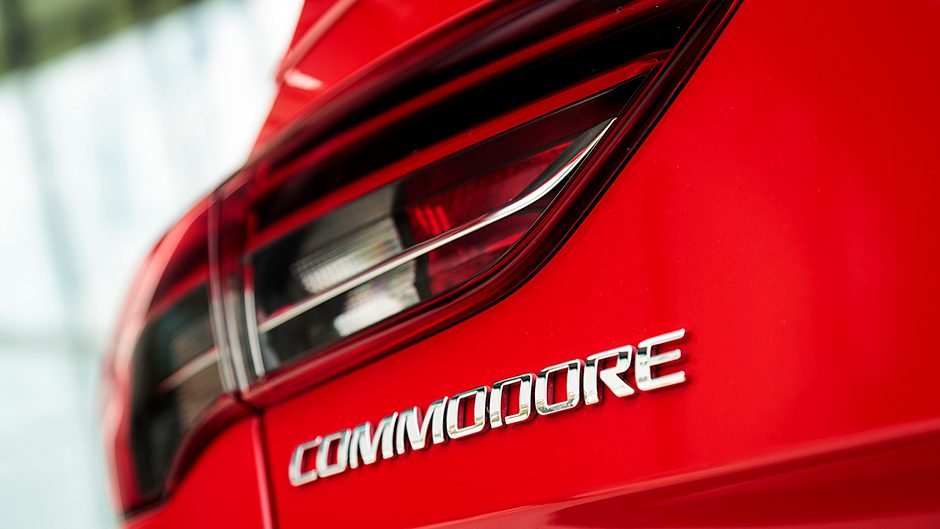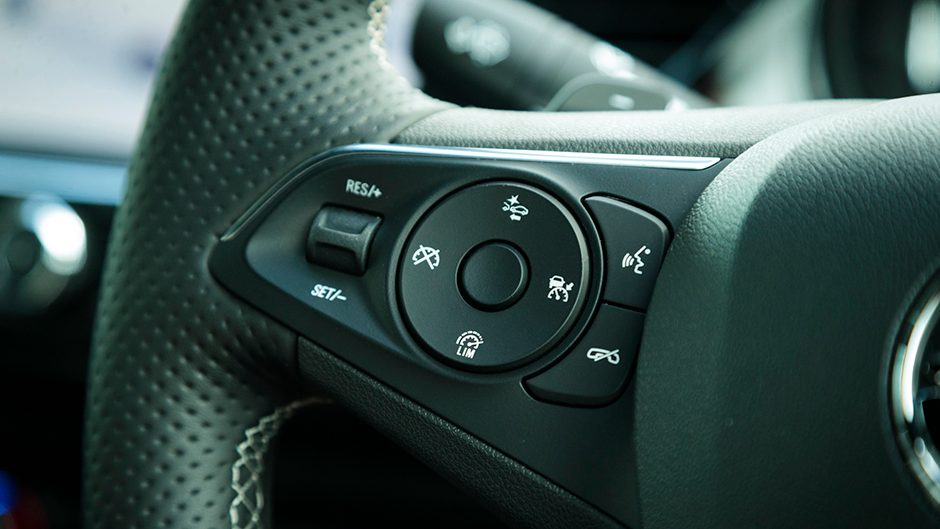2017 Kia Stinger GT vs Holden Commodore VXR comparison
Words Kyle Cassidy | Photos Tom Gasnier
Still prefer the style and dynamics of a car over a me-too-SUV? The new Commodore might be on your radar, and so too the Kia Stinger. Here we compare two top models to decide which is better.
You might have heard that there have been a few changes at Holden recently. Some reckon it’s gone for good, though these rumours of an early demise are somewhat exaggerated. But Holden enters a new era with the fifth-generation Commodore, a car which is something very different from what we’ve known previously.
That said, the whole carscape it lands in is a different beast. In days gone by, we’d have brought along a Ford Falcon to duke it out with the latest Commodore, but that bird is long stuffed. Even the notion of the big sedan is an increasingly foreign one as new models morph into five-door fastbacks in an effort to combat the load versatility offered by SUVs.
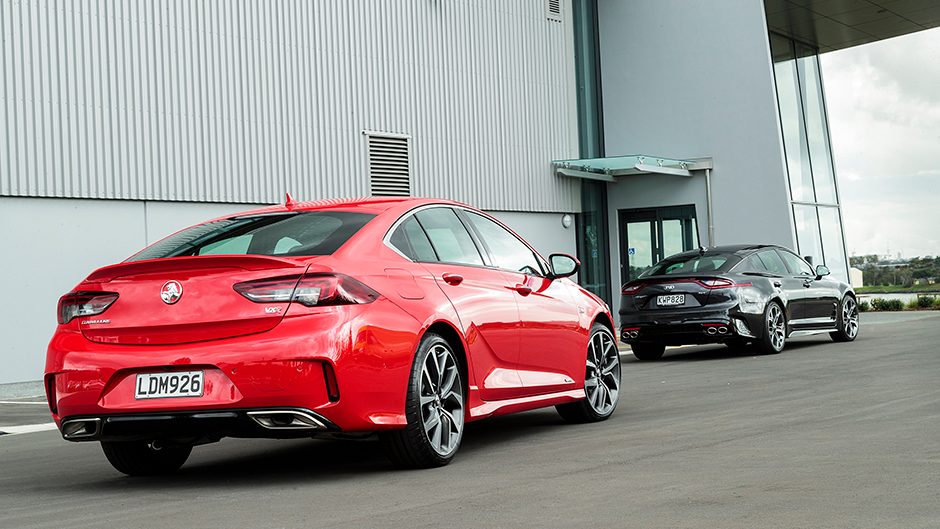
The sportiest Commodore no longer wears the SS badge, replaced by the letters VXR. It no longer houses an eight-cylinder engine, a V6 making do. But it has gained the benefits of AWD and more gears with a nine-speed auto. It’s price, $67,990, is $8k less than what they charged for the SS V Redline and, other than a lack of cylinders, power and noise, it’s more advanced, with an increase in on-board safety tech and convenience features.
The winds of automotive change now see Kia as a rival with its new Stinger, a sleek five-door costing $69,990 while matching the high-end specification of the VXR. So where would our money go?
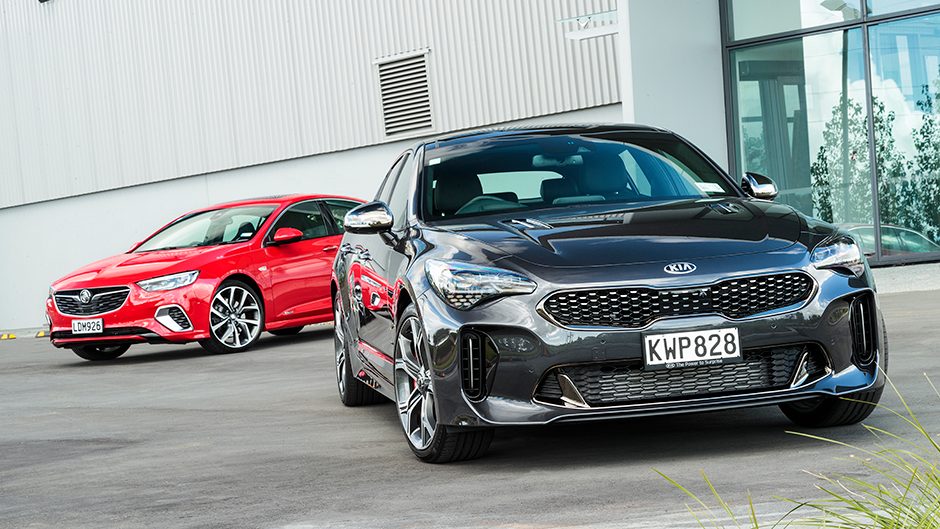
Designed to thrill
While these two share price points, size and a high-end spec, they have divergent powertrains. The VXR fronts with a 3.6-litre V6 and a nine-speed auto, variable AWD and dampers, and Brembo brakes. The Commodore is what they call a globally developed vehicle, Holden having input to the programme from the get-go, and tuning the suspension and steering feel in Australia.
There are three distinct suspension tunes for the Commodore range; Tour, Sport and Performance, the VXR conforming to the latter and is the only model fitted with Continuous Damper Control which offers three modes; Normal, Sport and VXR. The all-wheel drive system features the GKN Twinster diff on the rear end, able to influence the division of torque from 50/50 front to rear but more telling on dynamics is its ability to actively split that torque between each rear wheel. The VXR is also fitted with the so-called HiPer Strut up front, an enhanced version of the humble Mac strut with a unique steering knuckle and lower strut design.
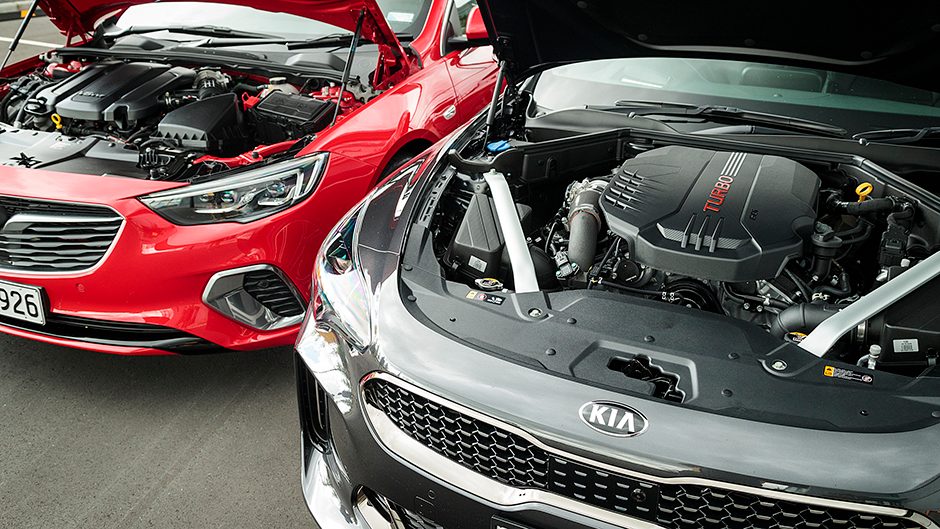
Like those fitted to fast front drivers such as the previous Focus RS and Renault Megane RS, these help eliminate any torque steer and improve both steering response via better control of the geometry, and ride comfort by separating out the forces acting on the strut. There’s a five-link rear suspension set-up and, for the VXR, the brake rotor size increases by 24mm on the front to 345mm with Brembo calipers. The 3.6 V6 is an update of the VF’s Alloytech making 235kW with 381Nm of torque registering at 5200rpm. The nine-speed auto is GM’s own design.
We’ve featured the Stinger in depth previously but a quick recap. It sits on a newly developed Hyundai/Kia rear-drive platform and features continuously variable electric damping. These are devised to alter the damping rates on the move, and the suspenders have been further tuned by Kia Australia with stiffer springs, revised dampers and larger roll bars. Variable drive modes are present, as is variable ratio steering. Kia’s own eight-speed auto sits behind a 3.3-litre twin-turbo V6 sending 272kW and 510Nm of torque to the rear, via an LSD. There’s torque vectoring by brake and Brembo supplies the hardware.
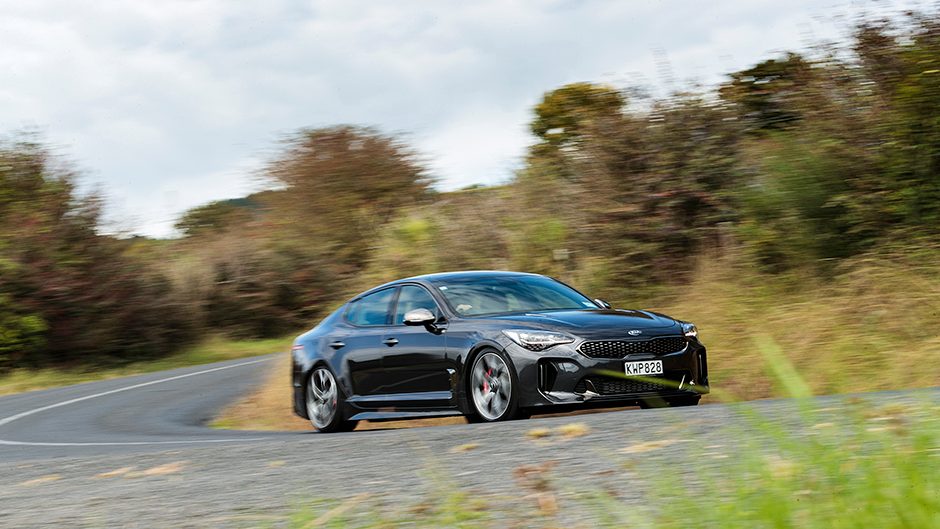
Driver’s cars both
Different these two may be, yet both are satisfying drives. If you like all-out control and complete composure, you’ll like the way VXR cuts a course across country. GMH has done a bang-up job of sorting this chassis. In VXR mode, the dampers are at attention yet all manner of bumps, dips and rises are taken almost seamlessly. With tightly composed control, the steering, consistently weighted and responsive, latches on to the cornering line easily. Given the variable nature of the AWD, you can gas it early and the VXR sucks in the bend, nose hugging the inside line, steadfastly refusing to stray.
The steering might not be the consummate communicator but it doesn’t require the ultimate tactilty as there’s virtually no understeer to manage thanks to that trick diff, which also helps negate its front end weight bias. The generous swags of Pilot Sport rubber may be rowdy on road but they’re mighty grippy while the suspension and prowess of the AWD compensate for a lack of sizzle under the bonnet, making this car satisfyingly quick point-to-point on Kiwi roads.
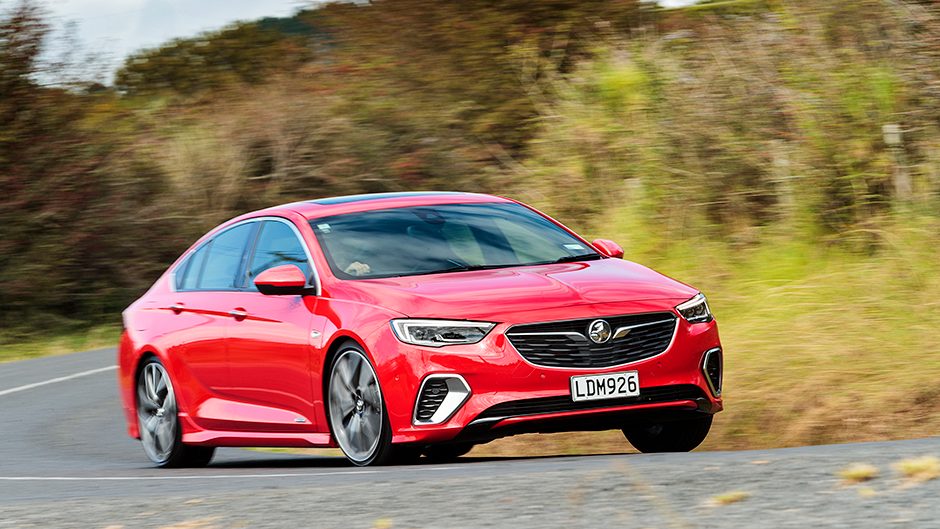
While the rear-drive Kia is not as ruthlessly efficient at dicing up a series of bends, its set-up delivers the more involving drive. It displays a more neutral, balanced feel, helping the front turn quickly for a big car. With the Stinger’s torque reservoirs brimming, throttle restraint is required on the corner exit.
While the LSD helps deliver good traction, it can also induce power-on understeer if you’re too keen. But get it right, and the rear is nicely rotated with a dose of throttle, made possible with some playful leeway from the stability control. The steering, while consistently weighted, could do with some added sensation nearing the limit, while the suspension isn’t as well versed at blotting blemishes in the tar seal as the Commodore’s, particularly those bumps littering the bends.
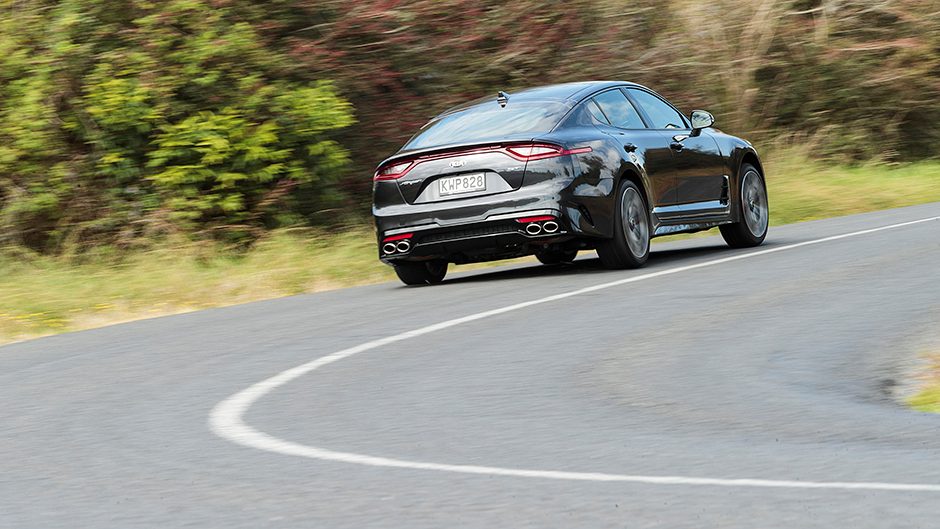
Like the VXR mode, the Stinger’s Sport setting brings a greater level of control but without harshness. Stinger could be firmer still for added body control, but as the badge suggests, this is a GT, not an RS.
Quick and quicker still
The Holden V6 has decent low-end torque with enough below 3000rpm to provide sufficient go through the burbs. However, next to a similarly-sized six with turbos, it’s never going to match the stronger pull of the Stinger. Accelerate in the Holden, and you think, oh yeah, that’s not bad, whereas gassing the Stinger, you simply go, oh yeah! With all-wheel stick, the VXR gets away smartly, though it doesn’t take long for the Stinger with its bigger reserves of huff and puff to surpass it. Though, as always, AWD would deliver a massive advantage in adverse weather conditions.
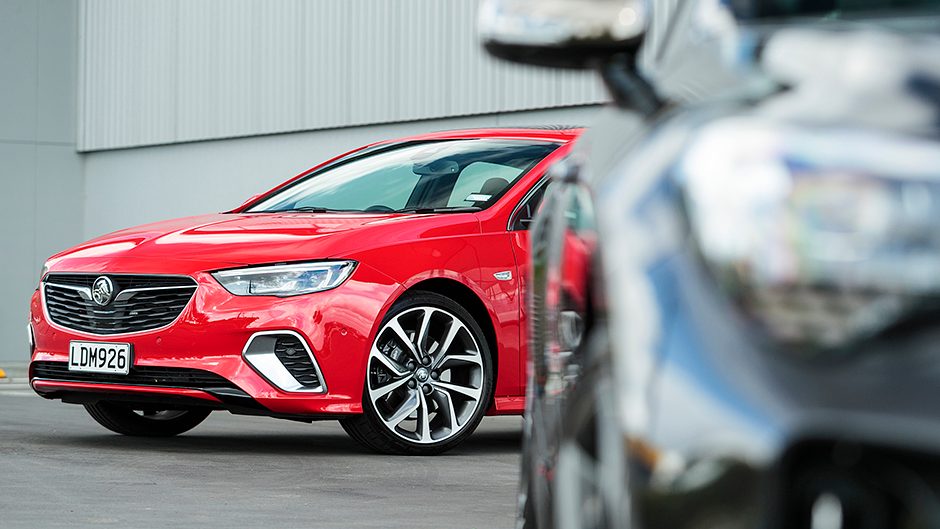
Both autos do their jobs for the day-to-day stuff, smooth and fuss-free, while the Stinger’s Smart mode is clever at quickly adapting to your needs, racy when you give it throttle but then quickly calming back down into cruise mode. Both have stop/start, the Holden’s more active and quicker at re-firing, though we’ve found these systems generally work better with normally aspirated engines. Neither transmission is truly great in Sport mode.
The Stinger needs to be paddled along to give of its best, while with a nine-speed box, you’d think there would always be a perfect solution for every occasion in the Commodore, though it’s not quite the case. Shifts via the paddles are laboured in execution, so we just left it to sort itself. It’s good at keeping the V6 spinning, which is where the power lies, whereas the Stinger never feels short of a ratio thanks to the turbo torque. Neither engine sounds epic, the Stinger’s tune synthesised and the VXR’s gruff note drowned out by the Michelins.
On the cruise
The VXR setting’s influence on the ride is noticeable when you’re cruising on the main highways, but in Normal mode, lumps are well ironed out. This Commodore is better at taking the initial harshness from a bump, though the Stinger is pretty cushy in Comfort too. That’s the thing with variable dampers, there’s a setting for all roads. Both travel well, with active cruise monitoring speeds, though the Kia is quieter.
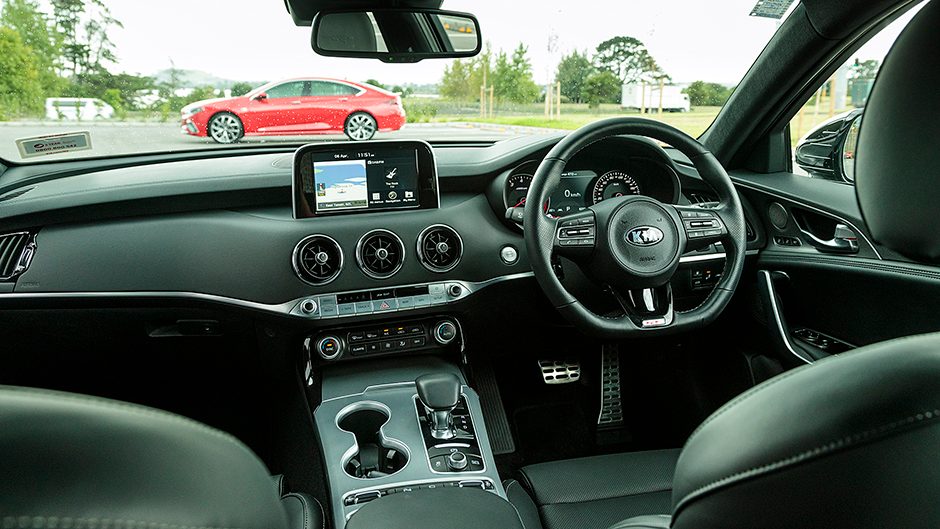
They can each drink petrol when exercised, spiking into the high teens, though 10L/100km seems a more likely average for the Commodore, with Kia getting through a bit more. Both have easy steering with a raft of gadgets to simplify traffic and parking, though the larger turning circle of the AWD Commodore is noticeable, as is the dull resolution of its parking camera screen.
Both have a good stock of safety features, the Holden featuring active lane keeping, and their smart cruise systems work down to a complete stop. These two have equally long spec lists, leaving you wanting for nothing. Included is scheduled servicing for four years/40,000kms on the Kia with a five-year/100,000km warranty. Holden covers you for three years/100,000km of servicing with a three-year/100,000km warranty. While styling is subjective, the Stinger simply has better proportions lending it a racier profile while the Commodore radiates generic hatchback. And this theme carries over to each car’s interior.
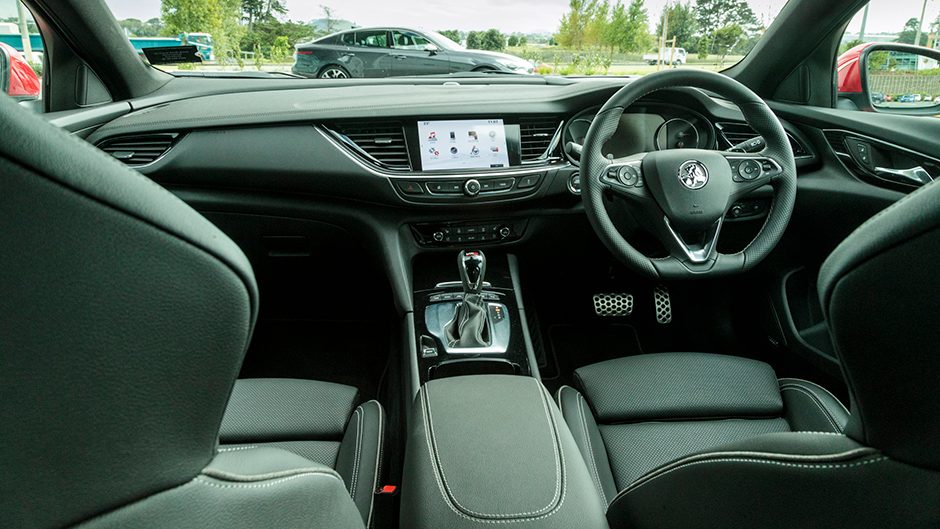
The VXR has some pretty racy seats with lots of support, though a little more comfort wouldn’t go astray. The rest however is fairly unremarkable compared with the Kia. The VXR does have some nice touches but there are still too many harsh surfaces for a circa $70k car (that doesn’t have a V8). The design, finish and quality of the Stinger leave little to fault. It offers more usable storage and though the screen sizes are similar, the Kia’s has a sharper resolution.
Both systems are replete with features and easily controlled via the touchscreen, but most will probably want to connect their phones to utilise the Android or Apple way of life. The Commodore retains much of its rear interior space, but where there used to be three Isofix points for child seats, there are now only two as the cabin is narrower. Still there’s more leg- and head-room than in the rear of the Kia.
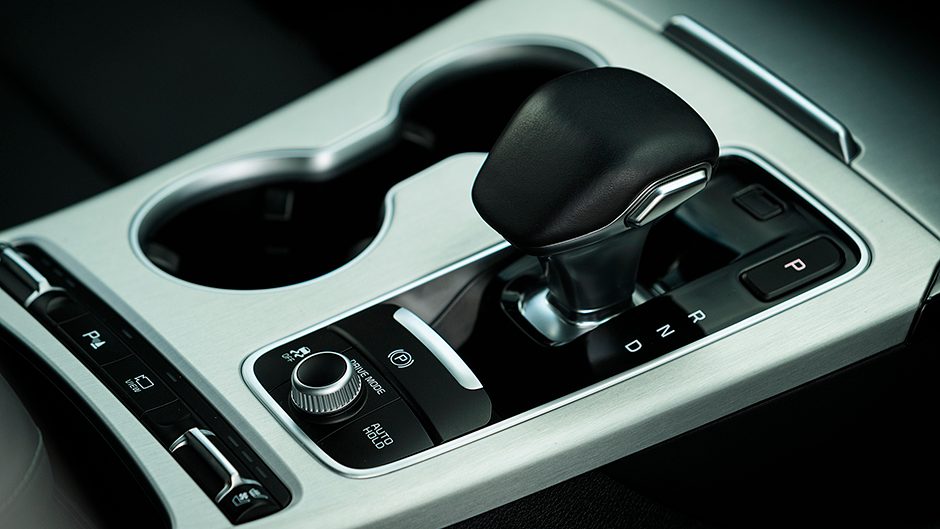
However, like the front seats, the bench in the rear of the Stinger is plusher. The Holden has the larger hold, wider and deeper and with easier split folding too, though the Kia offers a powered liftgate.
So which is it?
Stinger wins the day here with its blend of style and quality matched with its rear-wheel drive appeal and turbo-fed brawn. With AWD and stellar suspension tuning the Commodore is well suited to NZ roads but doesn’t quite stir things up like the Stinger.


